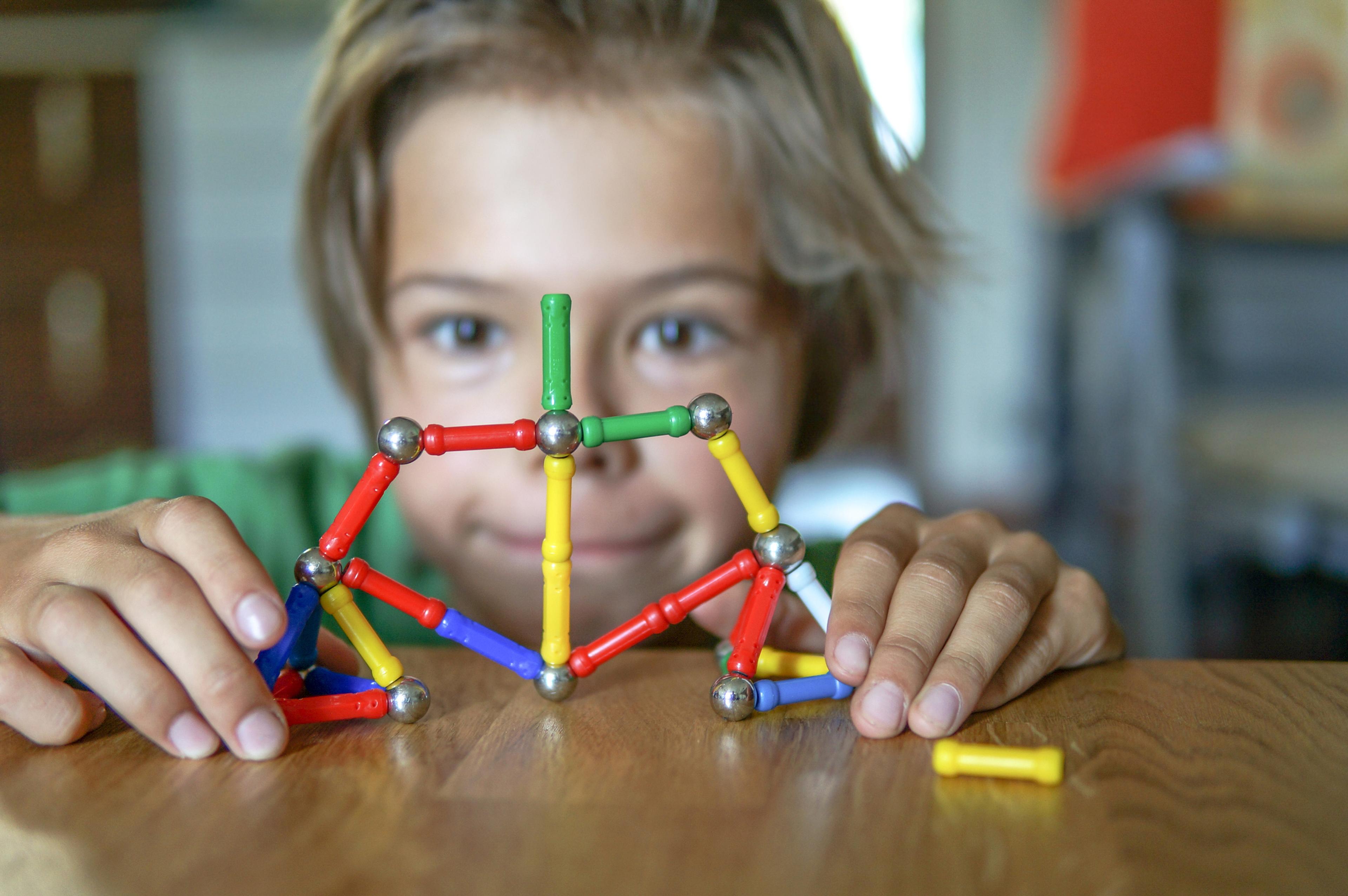What Doctors Want You to Know About Toys with Magnets
Amy Barczy
| 4 min read
Amy Barczy is a former brand journalist who authored...

Magnet toy sets seem like an incredible educational opportunity for children. But these magnets can be high-powered, and some are small enough to swallow – posing a significant risk to children of all ages.
Cases where magnets were ingested have been rising each year since 2018. From 2010 to 2021 there were an estimated 26,600 cases of magnet ingestions at hospital emergency rooms, according to the U.S. Consumer Product Safety Commission (CPSC), which estimates that 2,400 magnet ingestions were treated in hospital emergency departments between 2017 and 2021.
Risks of magnet sets for children
The risk with swallowing magnets is what happens when they attract to each other – or to other magnetic material – while inside the body. This can cause perforated organs, twisting or blocked intestines, as well as infection and blood poisoning. In severe cases, ingesting magnets can be fatal.
Magnet sets are such a concern that the Consumer Product Safety Commission voted to approve a new federal safety standard for magnets in September 2022.
Magnets are more than just a concern for toddlers and babies. A recent study interviewed 173 parents of children and teens that had ingested or inserted high-powered magnets. The median age was 7.5 years old. About 39% of the children accidently swallowed the magnets; 16% were young children using age-appropriate mouthing behaviors and 14% were youths who put the magnets in their mouth to stimulate a piercing.
The reason that magnets pose such a risk to children is there may be no immediate physical distress from swallowing a magnet. Additionally, it may be difficult for parents to know if a child has ingested a magnet – especially if the child is too young to communicate clearly, or old enough to be ashamed of what they accidentally did.
It may take days for the symptoms to pose significant discomfort. Symptoms, when they do appear, may mimic a bad stomach flu with vomiting, diarrhea and stomach pain. By the time symptoms become severe enough to seek medical attention, severe trauma may have occurred.
Types of magnetic toys
If parents and caregivers are considering magnetic toys, it can be difficult to know which types of toys are age-appropriate for their child. Consider the size and type of magnets included in the set, and the child’s capabilities:
- Some magnetic toys can include educational building sets, where magnets are embedded in plastic tiles or panels to allow for creative construction. The magnets in these sets are often lower-power magnets and the panels are often too large to attempt to swallow.
- Other toy sets could involve magnets embedded in wood, plastic or foam shapes, letters or animals. Ensure they are well-made, large enough that a young child would not attempt to swallow it and that the magnets are securely enclosed in the toy. Regularly check toys to ensure they are not damaged or falling apart, allowing a small magnet to come loose.
- Some magnetic building sets include small plastic rods with magnetic ends, and steel ball bearings. The ball bearings aren’t magnetic, but the plastic rods often include high-powered magnets and could be small enough to swallow, according to Consumer Reports.
- While not marketed specifically for children, there are sets sold in geometric shapes that include hundreds of of high-powered magnets the size of ball bearings. These are marketed as desk toys and stress relievers for adults. However, the size and shape of the magnets pose a significant risk to children.
What the experts say
The American Academy of Pediatrics does not recommend that families keep high-powered magnet sets in their home. However, if these toys are in the home, here’s how experts advise you keep your family safe:
- Keep magnet sets in a locked container where children can’t get to them
- Educate older children and teens on the risks of accidentally ingesting or swallowing a magnet by putting them in their mouths or noses
- If you suspect your child has swallowed a magnet, seek emergency medical attention





